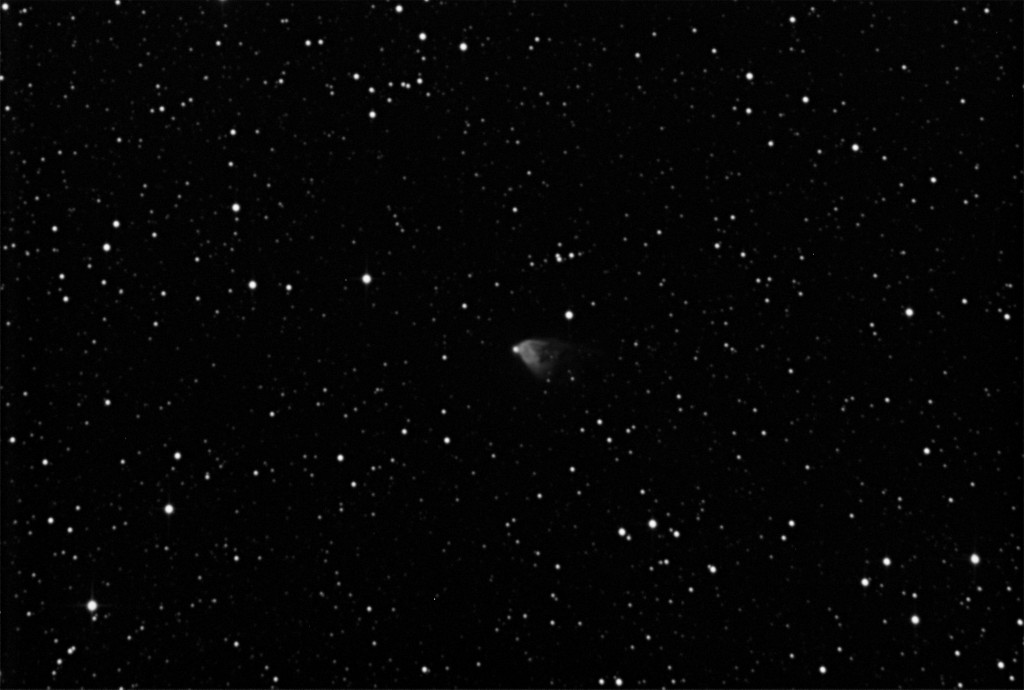In 1949, when Edwin Hubble was given the honor of taking the first photograph with the new 200″ Hale telescope at Palomar Observatory, this is the object he chose. It is a reflection nebula lit by a nearby star that he had studied earlier in his career at Yerkes observatory. What makes this nebula so interesting is its ability to visibly change appearance over the space of several weeks. The current theory for the rapid visual change is dense dust clouds orbit the star and during their orbit pass between the star and the nebula. We see the changing shadows the dark clouds cast onto the nebula.
”] The nebula and its associated variable star are both located in the constellation Monoceros (The Unicorn). Variable stars are cataloged by letter designation. Historically, the first identified in a constellation was given the letter ‘R’. The subsequent discoveries were given ‘S’ through ‘Z’. The letter designation is combined with the genitive form of the name of the constellation the star is in. The variable star that lights up Hubble’s Variable Nebula is R Monocerotis. Most constellations have so many variable stars that the alphabet runs out of letters. Once that happens a more complex system is used to name them.
The nebula and its associated variable star are both located in the constellation Monoceros (The Unicorn). Variable stars are cataloged by letter designation. Historically, the first identified in a constellation was given the letter ‘R’. The subsequent discoveries were given ‘S’ through ‘Z’. The letter designation is combined with the genitive form of the name of the constellation the star is in. The variable star that lights up Hubble’s Variable Nebula is R Monocerotis. Most constellations have so many variable stars that the alphabet runs out of letters. Once that happens a more complex system is used to name them.
This image is a stack of 30 ten second exposures taken on the 2nd of January.